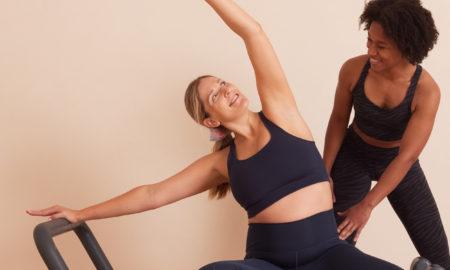Q: I’ve seen Inzitol in a number of products. What does it do, and should I be taking it?
A: Inzitol is the trade name for pinitol, a form of sugar that researchers are studying for use in insulin-deficient conditions, such as diabetes mellitus type I. The early results, predominantly from animal and test tube studies, showed an increase in both glucose uptake and glycogen storage in pinitol-treated subjects over what occurred in untreated subjects.
The most significant results were found in groups that had been rendered ‘diabetic’ by chemically destroying the pancreas (the organ where insulin is made and released). That’s similar to the type of diabetes that strikes young children, type I. For that group pinitol holds promise.
Most diabetics, however, suffer from what’s known as type II diabetes, in which insulin is produced and released but the body doesn’t react to it appropriately. In response, the body releases more insulin. Type II diabetes is much more common than type I. Most cases of type II diabetes arise during the adult years, and they’re often related to diet and lifestyle. Treatment for type II diabetes is complicated because the body has to be tricked into responding to insulin in a normal way.
Insulin acts at the muscle cell level by sitting in a receptor, which then triggers a cascade of reactions within the cell. With type I diabetes there’s no insulin to sit in the receptor, so the reactions are not stimulated. With type II there’s more than enough insulin, but the cells don’t react correctly. Pinitol is part of one of the early reactions to insulin’s signal. It’s easy to see why it would be valuable to people who can’t produce insulin. Since there’s no insulin to create the signal, they create the signal with the pinitol, driving in the sugar that way.
Most of us aren’t type I diabetics, however. The vast majority of us have a healthy pancreas and produce plenty of insulin, so adding pinitol does nothing to increase the signal at the cellular level. It collides with the signal created by insulin and gets stopped downstream.
Why was pinitol included in a number of supplements, including the original AnaVol-R formula? Initially, the research did not reveal that there’d be any limitations to using pinitol to increase the effectiveness of the formula for driving creatine and amino acids into the muscle. When later research became available, the formula was changed.
Would lipoic acid or vanadyl sulfate work in pinitol’s place? Although both have been touted as beneficial, there really isn’t any hard evidence to support the claims.
The only sure way to ‘drive’ more sugar into the cell without resorting to mega-carb formulas is exercise. Regardless of what products you use, be sure to take in something immediately after your workouts. It could be fruit, a meal-replacement powder or a creatine-and-carb blend, but make sure to take advantage of that critical window for replenishing and building your muscle. [Note: Muscle-Link has just released RecoverX, a postworkout formula designed to maximize the anabolic window. For more information see page 138 of the Nov '01 IRONMAN.]
Q: I noticed that the consistency of my semen is different. Could that be a side effect of a supplement?
A: Semen is a collection of fluids protecting the sperm. The majority of the volume of ejaculate comes from fluid produced within the prostate and the seminal vesicles (specialized tissue within the testicles).
The prostate is a hormonally sensitive gland and is affected by changes in the levels and ratio of androgens to estrogens. Some supplements can affect the prostate and the fluids it secretes. While that effect hasn’t been reported clinically, I’ve heard from a number of people about their experiences. There aren’t enough cases to point a finger at specific compounds, herbs or ingredients, but I have a suspicion that most of the cases are due to products that contain anti-androgenic properties, including the DHT-blocking herbs saw palmetto (Pygeum africannum), guggulsterone (Commiphora mukul) and others. Supplements with estrogenic properties, such as the soy isoflavones, may also contribute to the effect.
Readers have described a condition in which the semen becomes stickier and may change in color, and some experience irritation near the tip of the penis. I’ve suggested seeing an urologist if the problem doesn’t go away within one month of stopping all supplements.
Changes in semen can be related to serious conditions and should be evaluated by a qualified physician. You should immediately seek medical help if there’s ever any blood in your semen or urine. Old blood will appear as a rusty brown color rather than a bright red. People who are too embarrassed to seek help frequently end up with very serious problems.
Q: When I do seated rows, it feels as if it’s all arms. Is there a way to do rows that will hit my lats better?
A: The seated row is a popular exercise, but it’s among the most poorly performed in the gym. Performed incorrectly, it works the flexors of the arms and the traps and places a lot of strain on the lower back. When the brain is running on pure testosterone, the weights used are much too heavy, and the lift turns into a herky-jerky momentum movement.
Don’t use a bar if you can avoid it. I prefer rope handles because they allow my forearms to rotate throughout the movement. Fixed bars lock your arm in one position. If you’re stuck using fixed handles, try to find one that enables you to grip in a neutral position rather than palms up or palms down. Most gyms have a V-grip handle.
In using rope handles, have your palms down when your arms are straight and rotate them to a palms-up position as you pull back. That will take a lot of strain away from the muscles surrounding the elbows and wrists.
Also, think about your shoulder blades as you’re pulling back. Try to spread them wide as you pull back, rather than scrunching up. Keeping them wide works the lats more and takes the traps out of the movement to some degree.
Rather than leaning back, flex your abs tight and curve forward. Keeping them tight and not leaning back, especially if you can learn to spread your shoulder blades at the same time, will pretty much take your traps out of the movement.
Keep your arms down low throughout the rep. Pulling up toward your shoulders brings your traps back into the movement.
Those are the things that have definitely helped me reach a burn quickly in my back workouts. As always, control and maximum tension are important. Gauge your progress by how hard you can work as well as by how much you can lift.
Editor’s note: Daniel Gwartney, M.D., is a clinical pathologist and a graduate of the University of Nebraska College of Medicine. He’s been bodybuilding for more than 18 years. The material presented in this column is for general-information purposes only and is not to be construed as medical advice or an individual recommendation. Consult with your physician or health care provider before embarking on any fitness, training, diet or supplementation program. The author and IRONMAN assume no liability for the information contained in this column. IM




















You must be logged in to post a comment Login